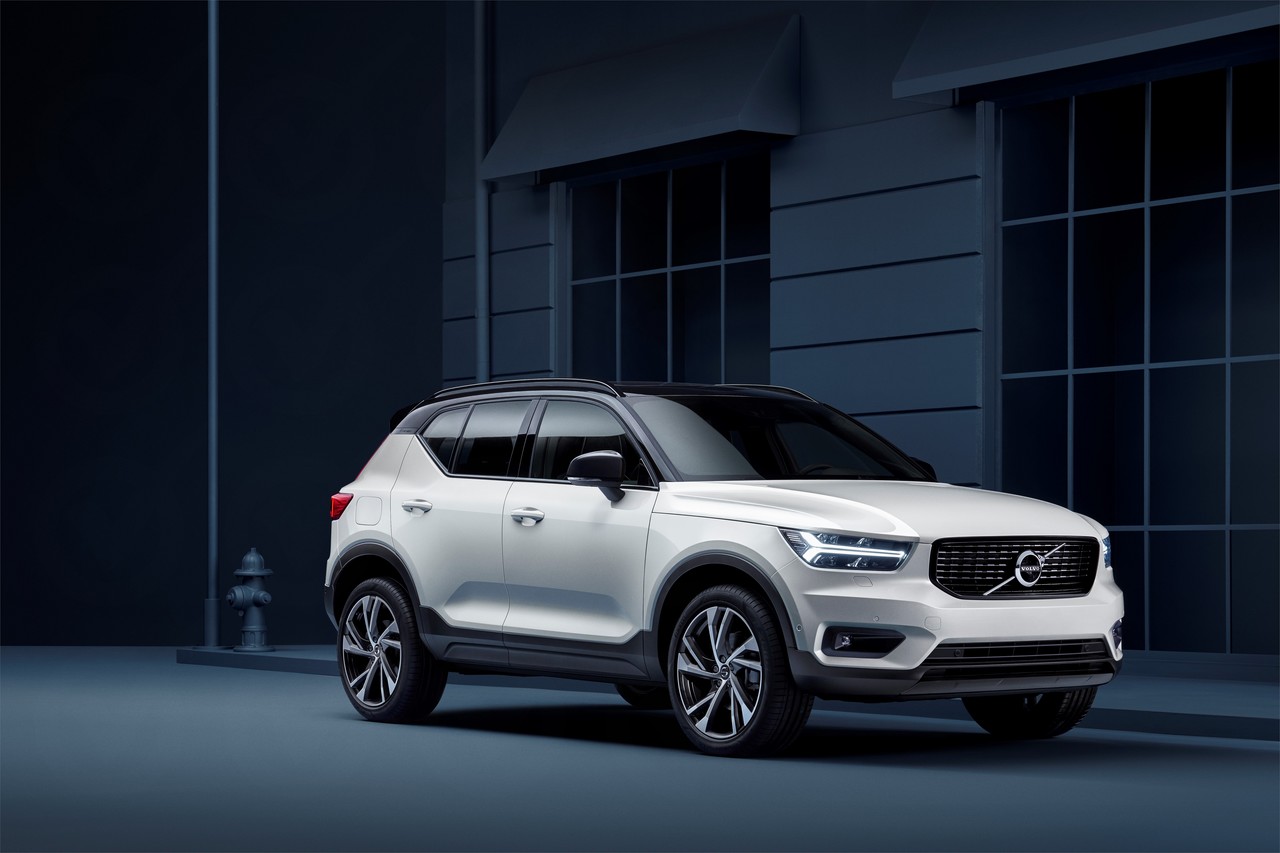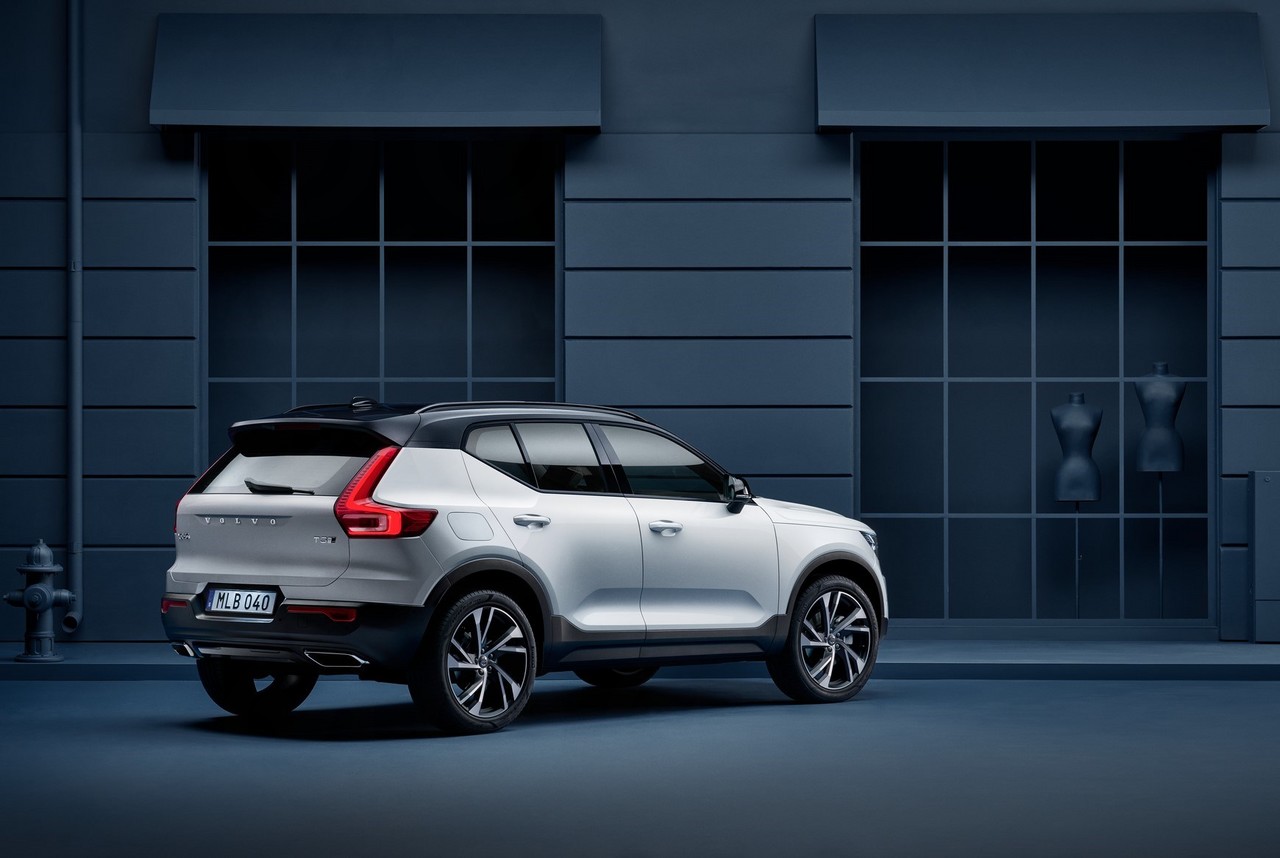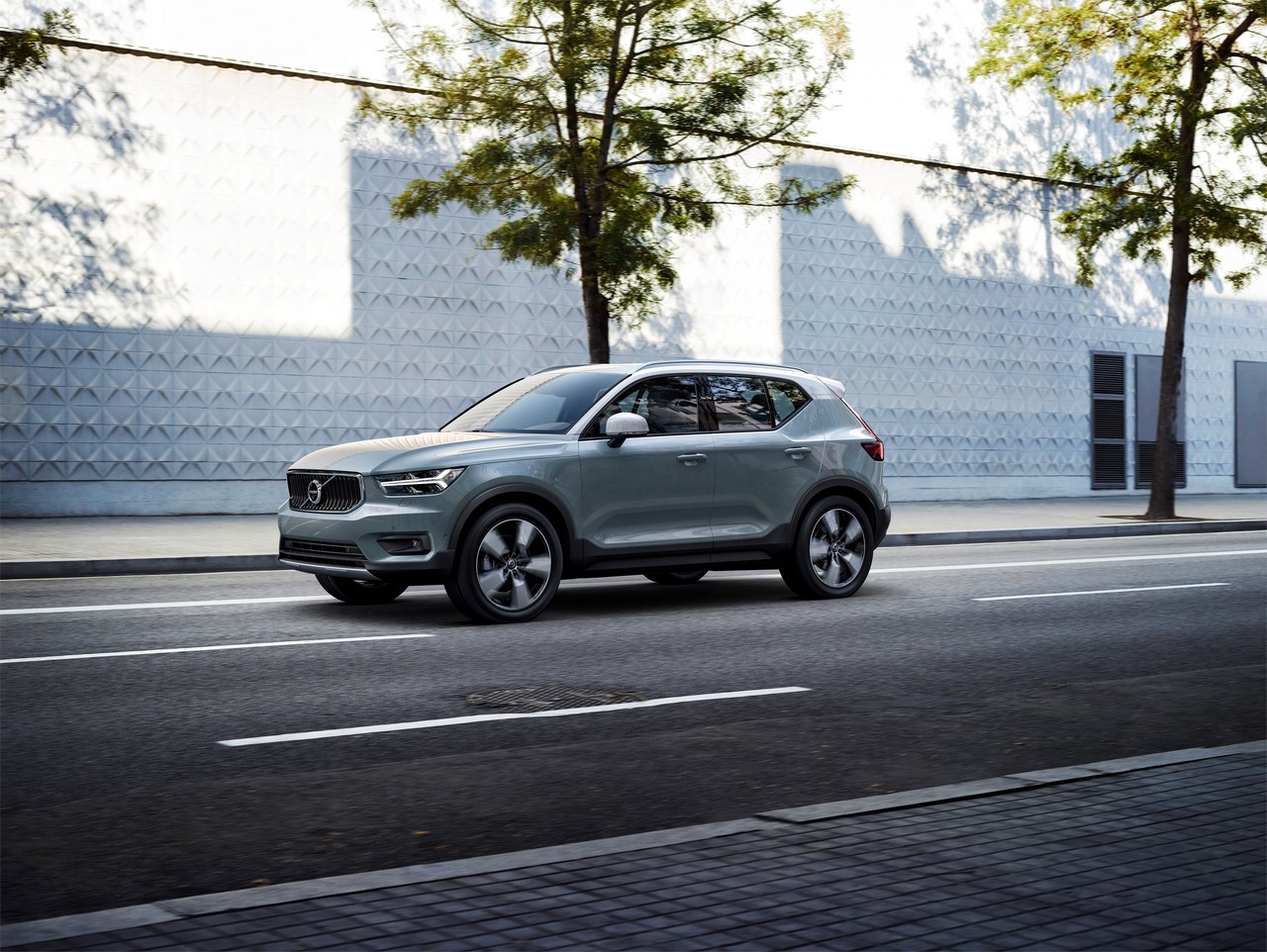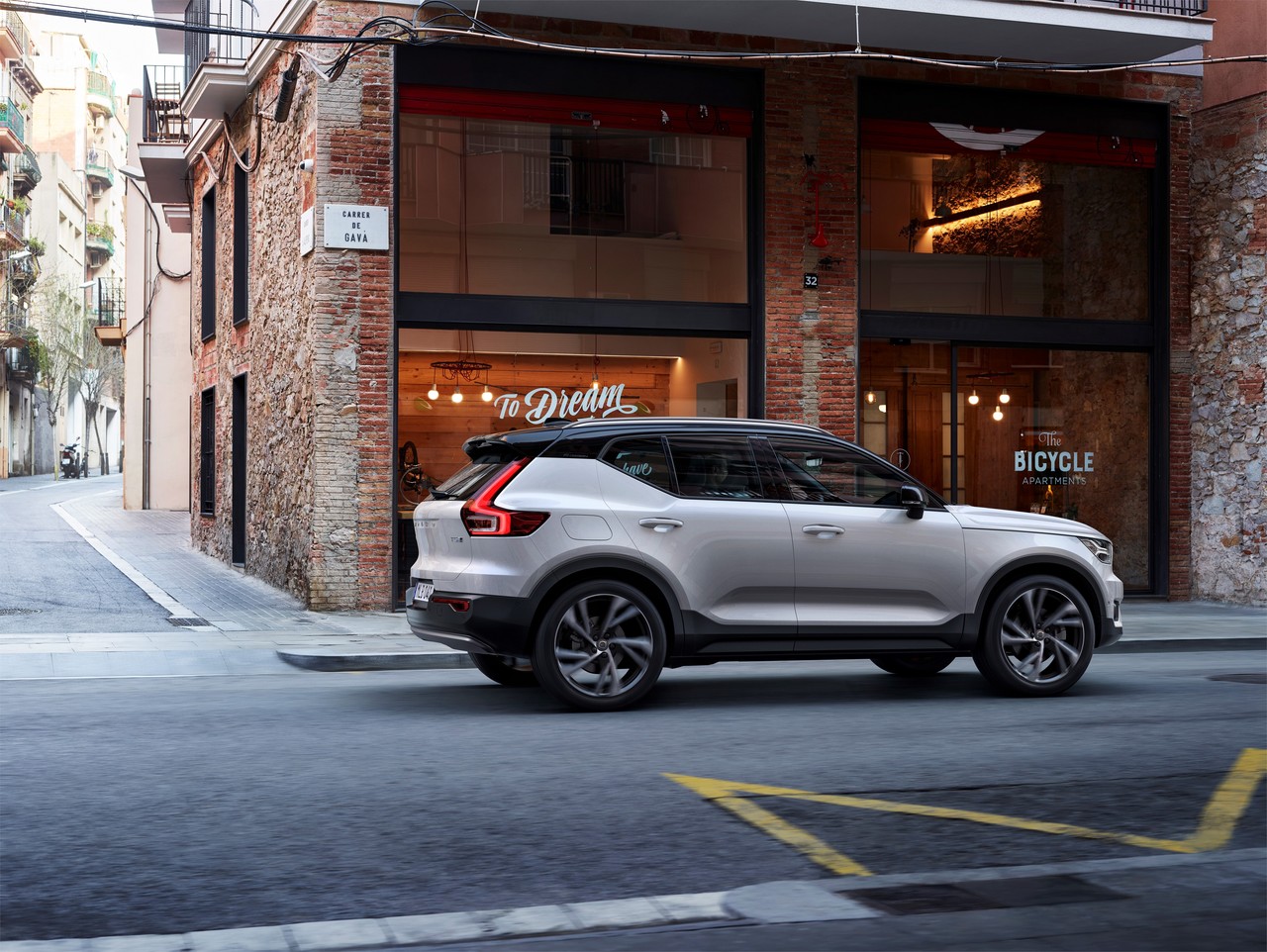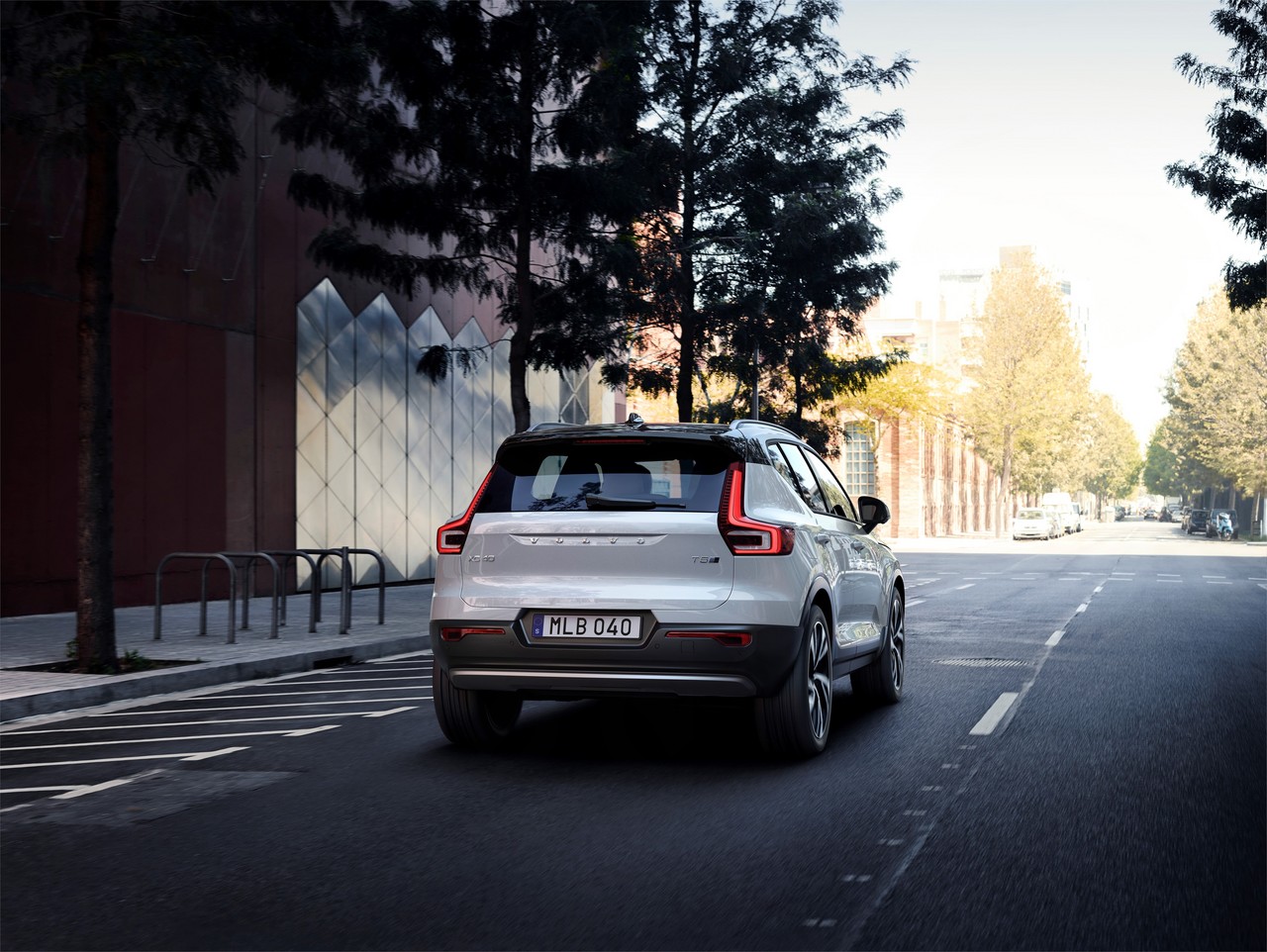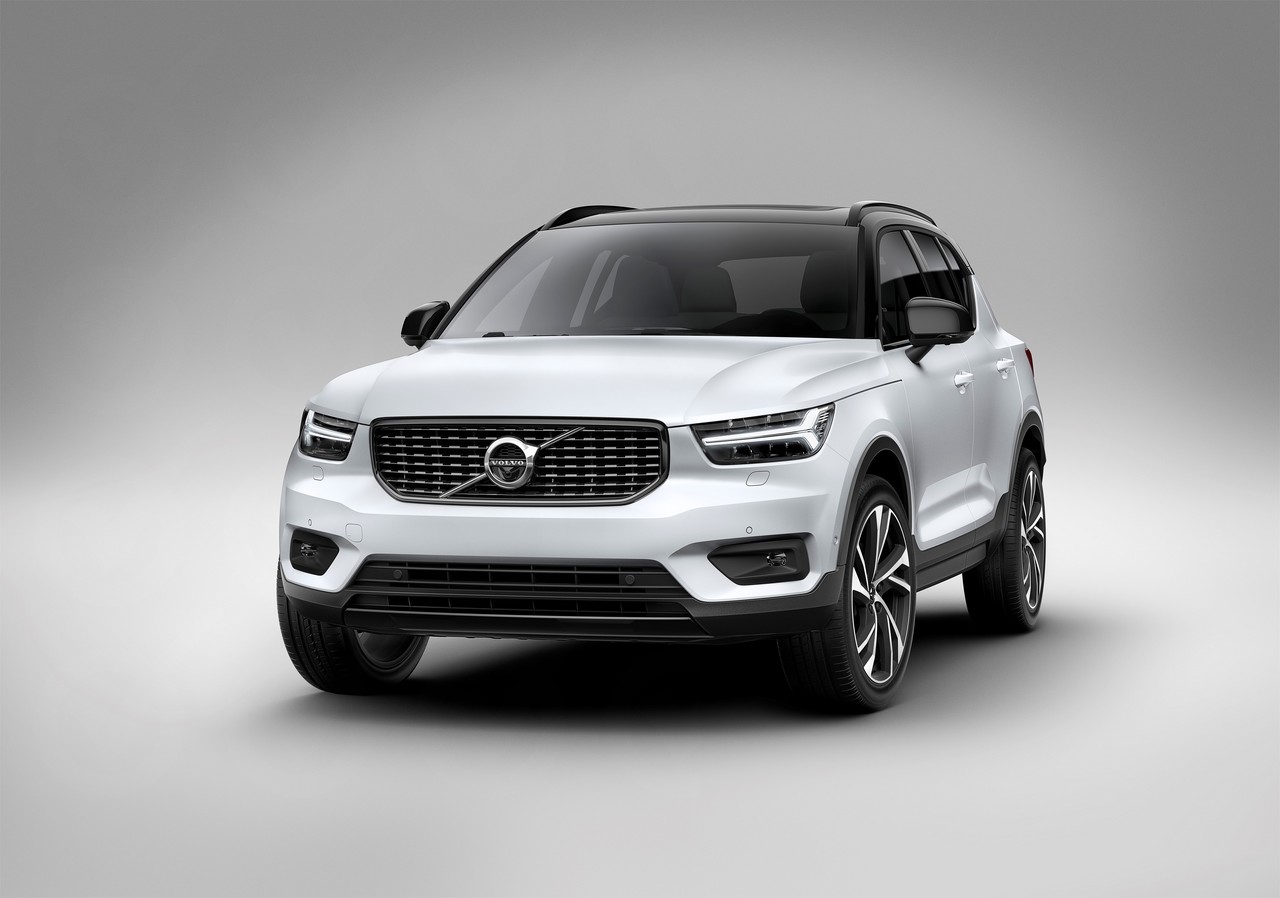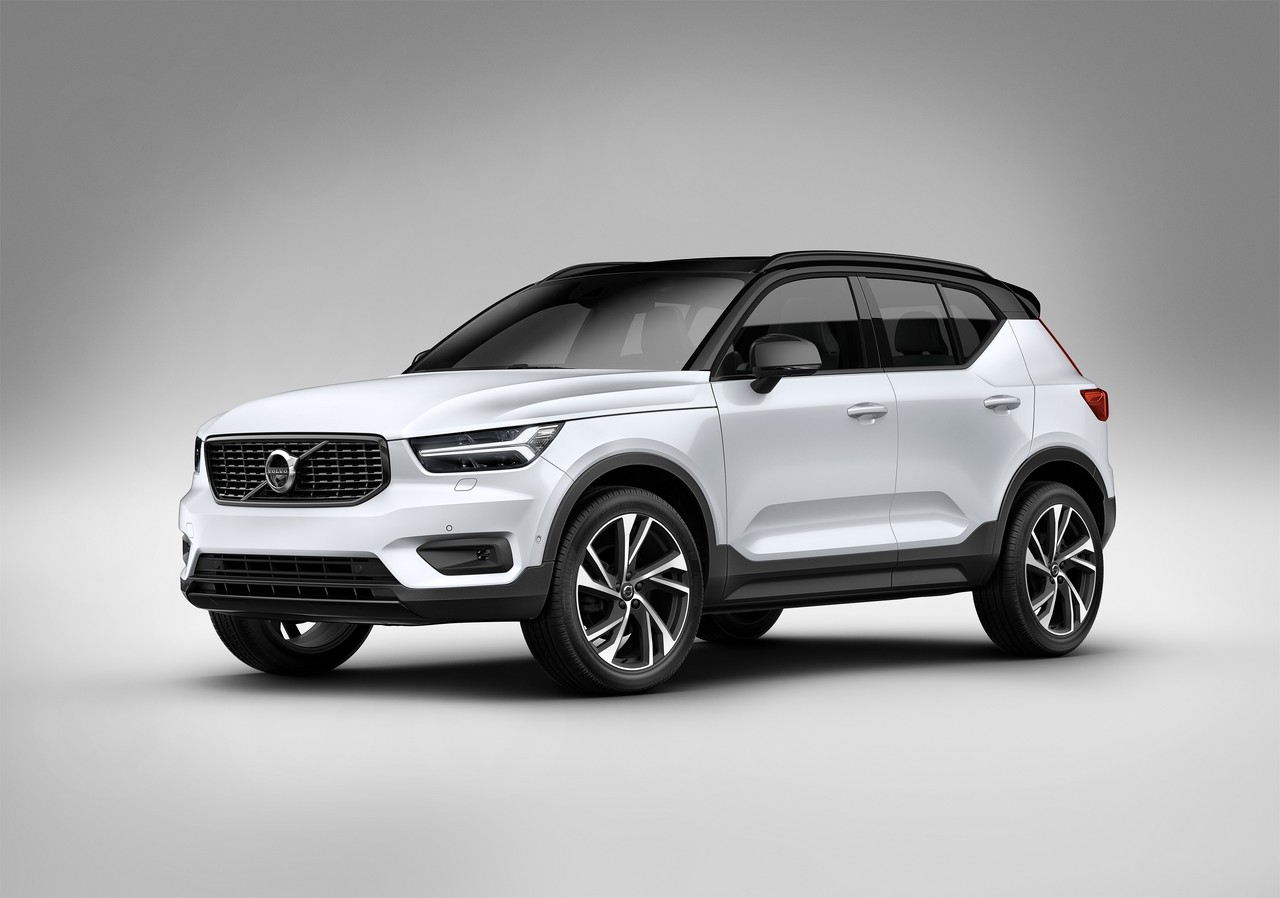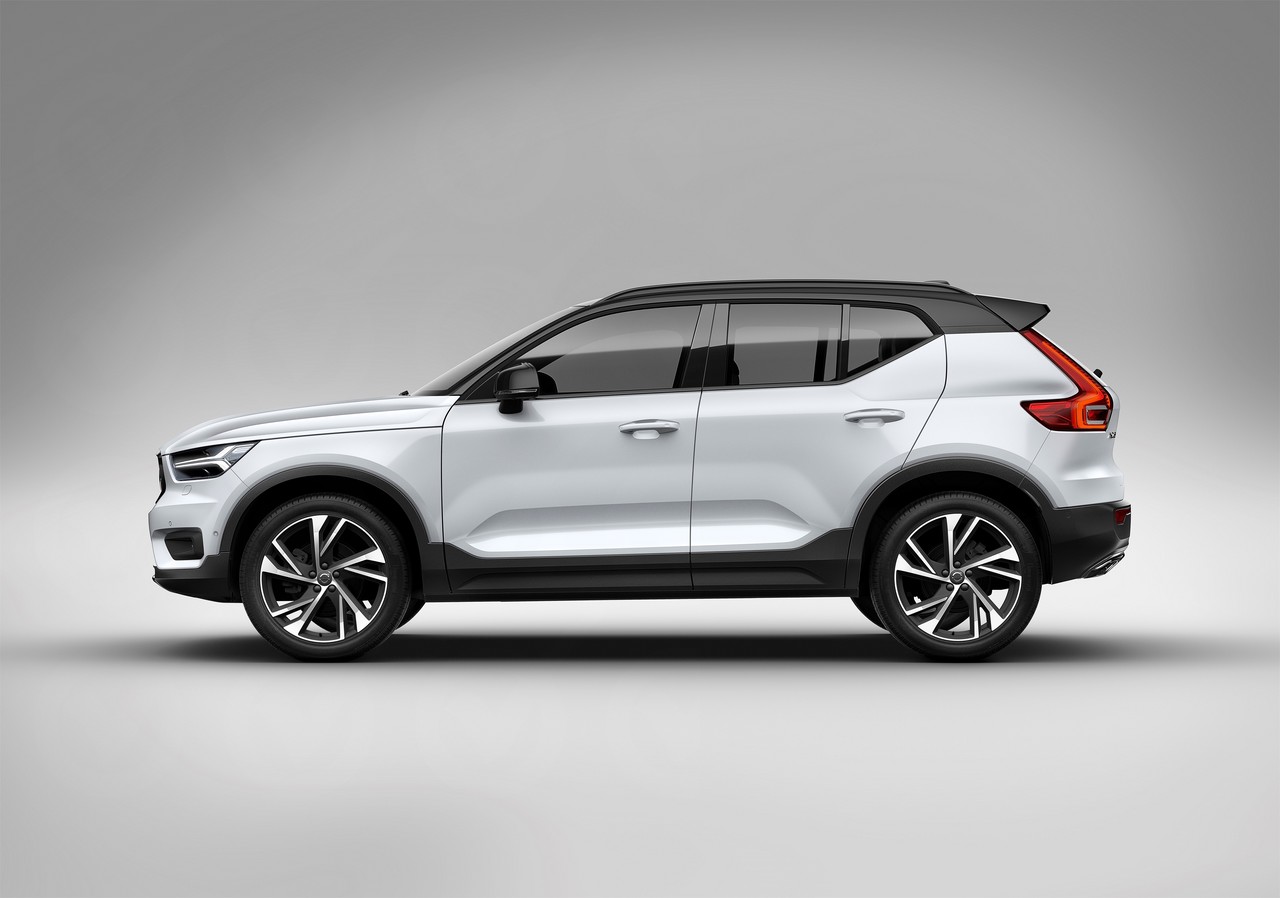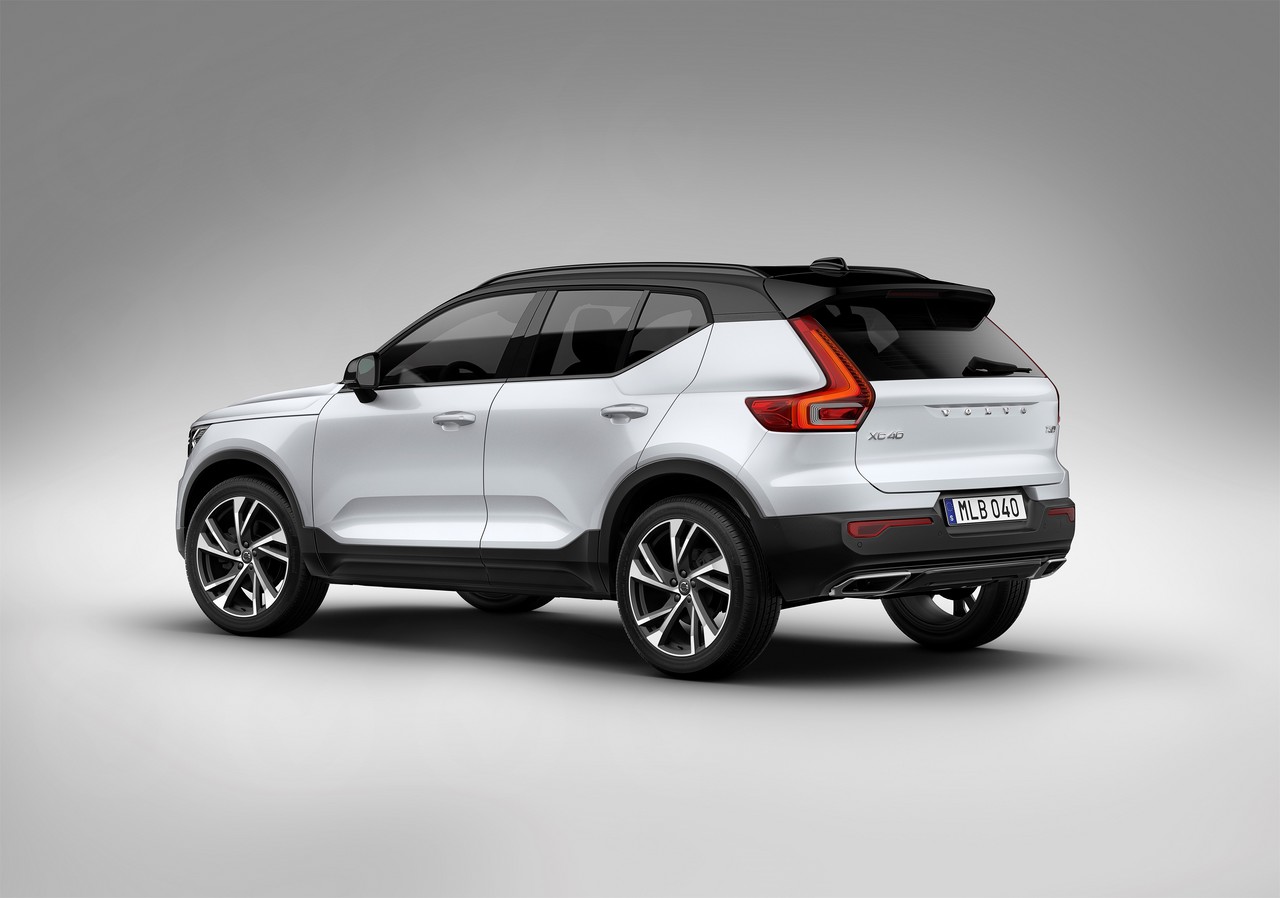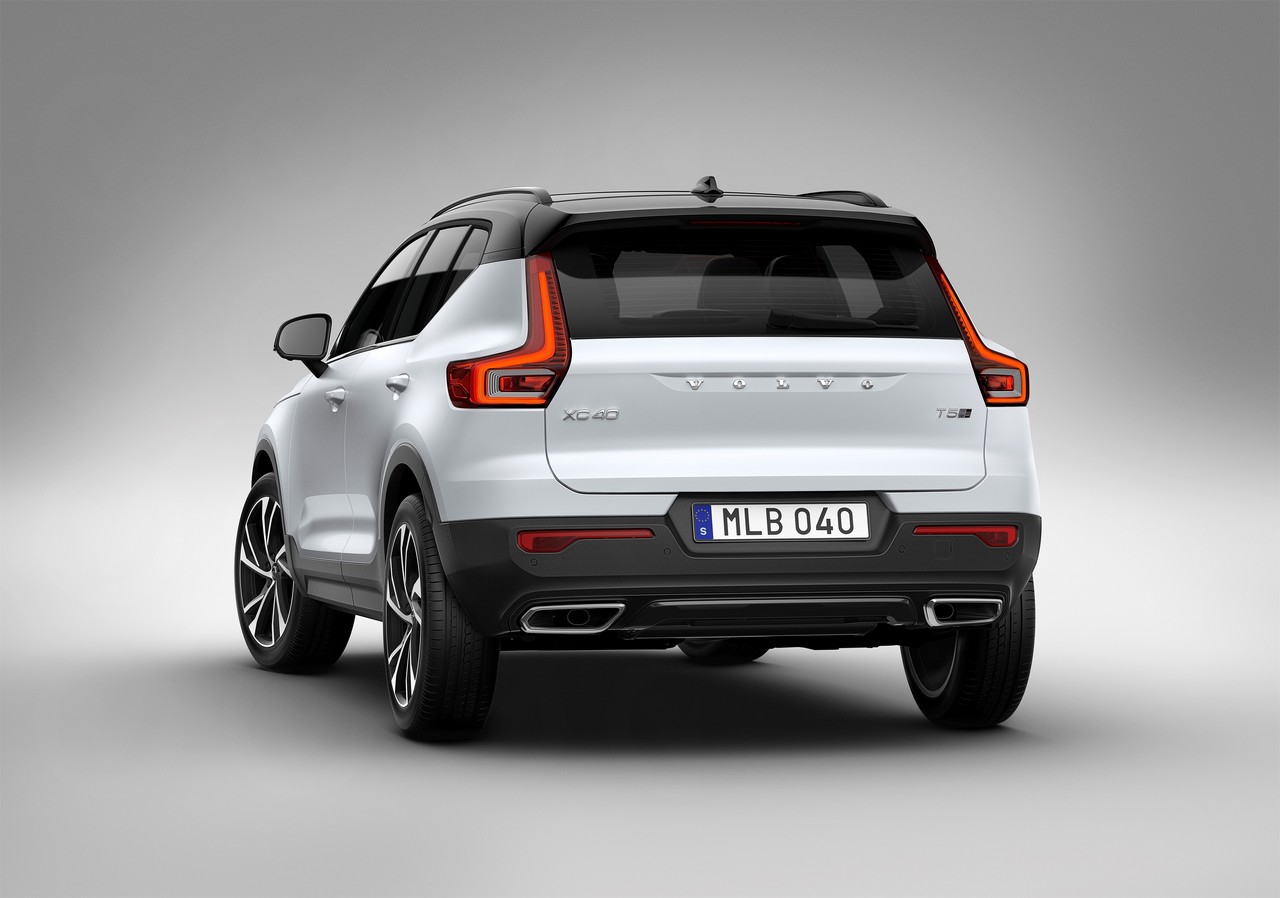
- Refined eight-speed Aisin Warner transmissions
- Comfortable ride
- Quiet, well-insulated cabin
- Stylish interior details
- Steering is well-weighted…
- … but lacks feedback
- High retail pricing (starting at $47,990)
- No physical buttons for HVAC controls
- Upright rear seats have short seat cushions
- Less luggage space boot than rivals
Overview
Released in Australia in May 2018, the Volvo XC40 was a compact SUV. Manufactured in Ghent, Belgium, the Volvo XC40 was initially available with 2.0-litre turbocharged petrol (T5) and diesel (D4) engines that were mated to eight-speed automatic transmissions. Although not initially offered in Australia, the Volvo XC40 was the first Volvo model to be powered by a three-cylinder engine.
Production of the Volvo XC40 commenced in November 2017.
| Edition | Engine | Trans. | Peak power | Peak torque | |
|---|---|---|---|---|---|
| T5 AWD | Momentum, R-Design |
1969 cc B4204T18 turbo petrol I4 | 8sp auto (AW TG-81SC) |
185 kW at 5500 rpm | 350 Nm at 1800-4800 rpm |
| D4 AWD | Momentum, R-Design |
1969 cc D4204T12 biturbo diesel I4 | 8sp auto (AW TG-81SC) |
140 kW at 4000 rpm | 400 Nm at 1750-2500 rpm |
Haldex V all-wheel drive (AWD) system
The Volvo XC40 had a fifth-generation Haldex all-wheel drive system which consisted of an electronically controlled and hydraulically actuated multi-plate clutch coupling (located in front of the rear axle differential at the end of the prop shaft). Under low loads or when coasting, the rear axle could be decoupled to reduce fuel consumption. If, however, there was a loss of front wheel traction or such a loss was anticipated by on-board sensors, then an electrohydraulic oil pump applied pressure to the clutch plates to transfer up to 50 per cent of the engine’s torque to the rear wheels (for a 50:50 front:rear torque split).
Body and dimensions
The Volvo XC40 was underpinned by Volvo’s Compact Modular Architecture (CMA). Co-developed with Geely, the CMA was designed to underpin future ’40 Series’ vehicles – such as the S40 and V40 – and fully electrified vehicles.
Compared to the Volvo V40 Cross Country which it effectively replaced, the Volvo XC40 was 55 mm longer (at 4425 mm), 80 mm wider (1863 mm), 194 mm taller (1652 mm, including the shark-fin antenna) and had a 55 mm longer wheelbase (2702 mm). Drag co-efficients for the Volvo XC40 range from 0.34 Cd to 0.37 Cd, while kerb weights ranged from 1684 kg to 1733 kg.
The Volvo XC40 had a cargo volume of 460 litres, though this increased to 1336 litres when the rear seats are folded down.
Suspension and steering
The Volvo XC40 had MacPherson strut front suspension and independent, multi-link rear suspension; both the front and rear suspension had coil springs, hydraulic shock absorbers and anti-roll bars.
The Volvo XC40 had rack-and-pinion steering with speed-sensitive, electric power assistance; its turning circle was 11.4 metres.
Safety equipment
Standard safety equipment for the Volvo XC40 included dual front airbags, a driver’s knee airbag, front side airbags, full-length curtain airbags, ABS, electronic brake force distribution, brake assist, electronic stability control, traction control and seatbelts with pre-tensioners for all seats.
As standard, the Volvo XC40 was fitted with Volvo’s ‘City Safety’ system which was active at speeds above 4 km/h. City Safety included collision avoidance or mitigation with –
- Other vehicles: for vehicles in front of the Volvo XC40, the driver received a warning followed by autonomous braking if the driver did not brake or steer to avoid the vehicle ahead. At speed differences up to 50 km/h between the XC40 and the vehicle ahead, the collision could be avoided even if the driver did not react. At higher speed differences, however, autonomous braking only reduced the severity of the collision. If a collision was imminent and the XC40 was travelling above 30 km/h, the front seatbelts were also tightened;
- Cyclists: if a cyclist swerved into, crossed or was stationary in the path of the Volvo XC40, City Safety would warns the driver and initiate autonomous braking if the driver did not;
- Oncoming vehicles in intersections: if the driver attempted to turn in front of an oncoming vehicle, City Safety could initiate autonomous braking to prevent the turn;
- Pedestrians: if a pedestrian moved into, crossed or was stationary in the path of the Volvo XC40, the driver would be warned and the brakes would be applied autonomously if the driver fails to do so (at speeds up to 70 km/h). A pedestrian collision could be avoided from initial speeds up to 45 km/h; and,
- Large animals: the radar/camera unit could detect large animals – such as moose, elk and deer – that were either on the road or about to cross it. The driver received an initial warning and, when braking, additional brake pressure could be provided if needed. If the driver did not respond, the brakes could be applied autonomously. According to Volvo, autonomous braking when large animals were detected could result in vehicle speed being reduced by 15 km/h. If a collision was imminent and the XC40 was travelling at a speed above 30 km/h, the front seatbelts would also be tightened.
The Volvo XC40 was also fitted with the following active safety technologies as standard –
- Rear Collision Mitigation: used a rearward facing radar to detect if a rear impact was imminent and, if so, tightened the seatbelts to protect occupants and flashed the brake lights to warn the following driver;
- Blind Spot Information System (BLIS) with Steer Assist: used rear radar sensors to detect vehicles approaching the rear of the XC40 from seventy (70) metres away and would alert drivers to their presence. If the driver attempted to change lanes while there was a vehicle in the driver’s blind spot, the Steer Assist function would provide counter-steering to keep the XC40 in its lane;
- Cross Traffic Alert (CTA): when reversing out of parking space, CTA used the rear radar sensors to detect vehicles approaching up to 30 metres away that may cross the driver’s intended path. If detect, the driver would receive audible and visual warnings;
- Lane Departure Warning: used a forward-facing camera to monitor lane markings when driving at speeds above 65 km/h. If the driver unintentionally drifted out of their lane, the system would provide gentle steering wheel torque to steer the vehicle back onto its intended course. If the vehicle departed from its lane, a warning would be issued via haptic vibration of the steering wheel;
- Lane Keeping Aid: used a forward-looking camera to monitor lane markings when driving at speeds between 65 km/h and 200 km/h. If the driver unintentionally drifted out of their lane, the system would provide gentle steering wheel torque to steer the vehicle back onto its intended course. If the vehicle departed from the lane, a warning would be issued via a haptic vibration in the steering wheel; and,
- Road Sign Information: automatically detected road sign information and provided this information in the instrument display.
Euro NCAP testing
In Euro NCAP testing , the Volvo XC40 received a five star safety rating which included a 97 per cent adult occupant protection rating and an 87 per cent child occupant protection rating. In the frontal offset test, occupant protection was generally rated as good, though left lower leg protection for the front occupant was rated as adequate (i.e. a slight risk of serious injury). Furthermore, maximum points were awarded in the side and pole tests.
Wheels, tyres and brakes
For Australian-delivered vehicles, the Volvo XC40 Momentum had 7.5J x 18-inch alloy wheels with 235/55 R18 tyres, while the XC40 R-Design had 8.0J x 20-inch matt black diamond cut alloy wheels with 245/45 R20 tyres. Furthermore, the Volvo XC40 D4 and T5 had 345 mm by 30 mm ventilated front brake discs and 302 mm by 12 mm solid rear discs.
Features: Volvo XC40 Momentum
Standard features for the Volvo XC40 Momentum included a ‘Navigation Pro’ navigation system with a nine-inch touchscreen, Bluetooth mobile phone connectivity with voice recognition, an eight speaker sound system with digital radio tuner (DAB+), two USB connections, dual-zone climate control air conditioning and a cooled glove box, power adjustable front seats, driver’s seat memory settings, cruise control, LED headlights with dusk-sensing function, rain-sensing wipers, front fog lights, a rear parking camera, front and rear parking sensors, a leather-wrapped steering wheel and gear knob, split folding rear seats, remote central locking, power adjustable and folding door mirrors, power windows, a height and reach adjustable steering wheel, height adjustable front seats, auto-dimming rear-view and door mirrors, ‘Urban Grid’ decor inlays, illuminated vanity mirrors, a 12 volt power outlet (cargo area), tyre pressure monitoring, a trip computer and an immobiliser.
As standard, the Volvo XC40’s instrument cluster contained a 12.3-inch digital display.
Features: Volvo XC40 R-Design
Compared to the XC40 Momentum, the XC40 R-Design was further equipped with R-Design leather and Nubuck upholstery, front passenger seat memory settings, directional headlights (Volvo’s ‘Active Bending Lights’), steering wheel gearshift paddles, a proximity key (i.e. keyless entry), ambient lighting, R-Design aluminium decor inlays, a charcoal headlining and a power-operated tailgate.
Features: Volvo XC40 Momentum Launch Edition
The Volvo XC40 Momentum Launch Edition was released to coincide with the XC40’s Australian debut. Compared to the XC40 Momentum, the Volvo XC40 Momentum Launch Edition was further equipped with:
- 19-inch five-spoke black diamond-cut alloy wheels;
- Adaptive Cruise Control with Pilot Assist;
- A Harman Kardon sound system;
- Leather upholstery;
- Heated front seats;
- For the driver’s seat, a power adjustable headrest and backrest, and a mechanical cushion extension;
- A power adjustable front passenger seat;
- Directional LED headlights;
- A 360 degree camera system;
- A proximity key (i.e. keyless entry);
- Volvo’s ‘Park Assist Pilot’;
- A power-operated tailgate;
- High interior illumination;
- Tinted windows;
- An alarm; and,
- A sunroof.
Related links
